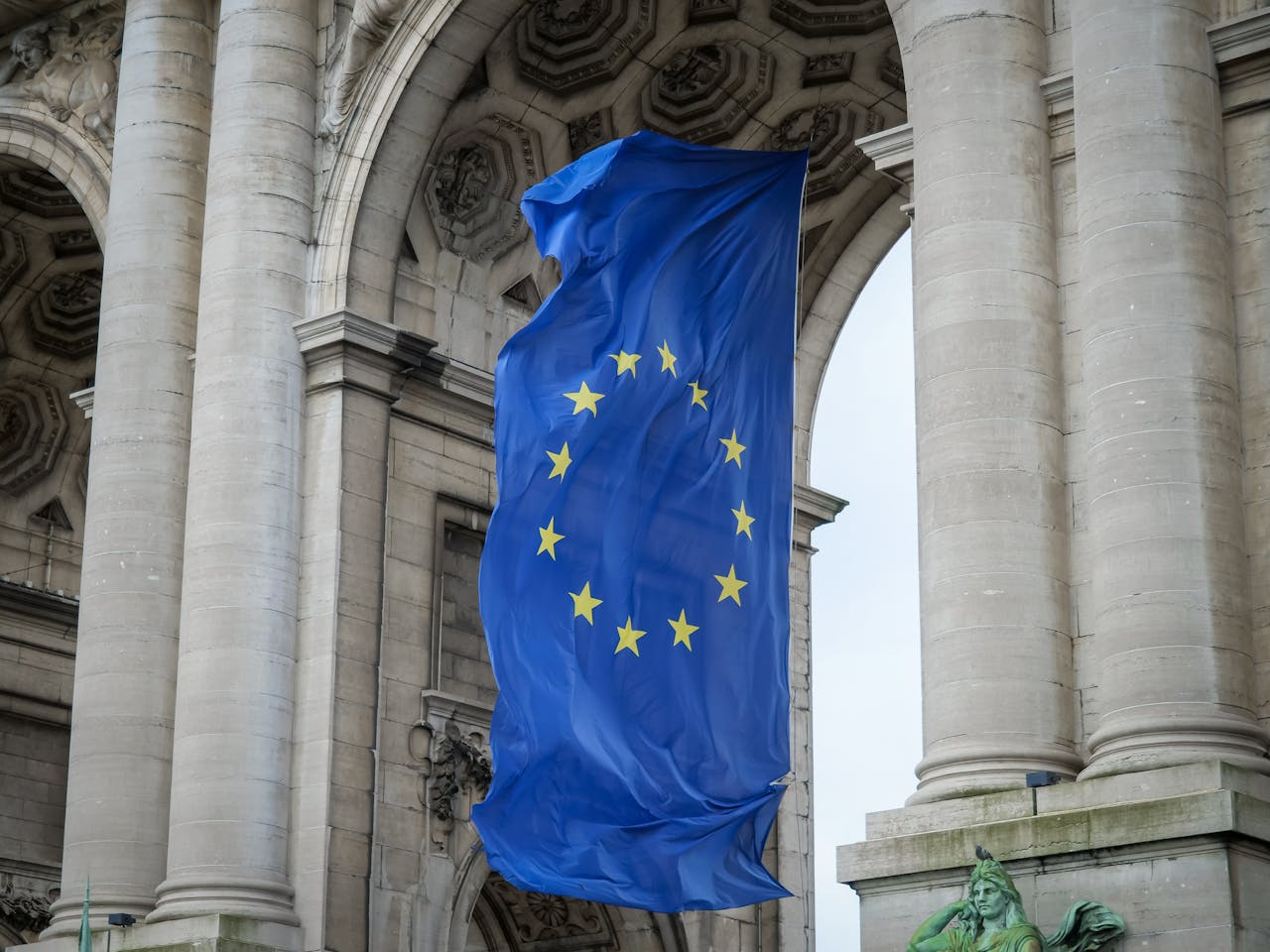Digital Product Passport is one of a number of initiatives by the European Commission towards sustainable Europe.
In March 2022, the European Commission presented a number of proposals aimed at improving product sustainability. One of the main initiatives is introducing a circular economy business model in the European Union countries.
Additionally, all of this is only a part of an even greater initiative, the European Green Deal. The EU Green Deal is a plan for Europe’s sustainable development and growth.
Under the Green Deal, the plan is to, by 2030, reduce CO2 emissions by 55% compared to 1990 levels. What’s more, the plan is to, by 2050, make Europe the first climate-neutral continent.
Hence, the European Commission has proposed initiatives along the entire life cycle of a product. The initiative strives to prevent waste and keep the utilized materials in the EU economy for as long as possible. Furthermore, the plan targets product design, stimulates circular economy practices and promotes sustainable consumption.
However, to obtain, utilize, keep and access all the information required, there must be a solution at hand. And this is where the Product Passport enters the scene.

Why is the EU introducing DPP?
Although the DPP requirement for the countries of the European Union has not yet been put into effect, it will soon, thanks to the Sustainable Product Regulation proposal that the European Commission approved in March 2022.
Currently, the EU is considering these three industries for product passport implementation in 2026:
- Apparel
- Batteries
- Consumer electronics
– with the rest to follow. Only food, feed, and pharmaceutical products are excluded from the rule as part of the European Green Deal.
As a result, any business selling a product on the EU market will need to provide a product passport for both the finished product and each of its individual parts. In this way, even if the law is particular to the EU, the decision will have an impact globally.
The EU digital product passport’s objective is to gather information about a product and its supply chain. This information will then be accessible so that all parties, including customers, may better understand the products they use and their environmental impact. Thus, by increasing the traceability and availability of data the intention is to make the move to a circular economy easier.
Product passports are primarily meant to improve the following areas:
- More sustainable production – by enhancing the use of materials and energy, extending the life of products, and maximizing product performance.
- Circular economy models – by making it possible for businesses to use service and repair-based business models.
- Educated choices while making purchases – by encouraging consumers to make more eco-friendly decisions and track their effects.
- Verify that laws are being followed – by overseeing the EU-wide registration of the certifications and standards that a product has earned.

What are the benefits of DPPs?
Digital Product Passports are beneficial because the EU wants to set the global standard for the development of a circular economy by lowering its carbon footprint and promoting sustainable manufacture and consumption of products and their parts.
The product passport will among other things offer:
- Relevant product details
- Enhanced product traceability
- Improved supply chain visibility
- Better compliance insight
- Full-lifecycle monitoring of compounds of concern within the specific product.
Besides the abovementioned, there are additional benefits of implementing product passports for both businesses and consumers:
Benefits for consumers – the ability to make informed purchasing decisions
By scanning the product QR code and accessing the DPP, the consumers will obtain the information that will help them learn about the product as well as see the ways to repair and recycle the purchased item.
Benefits for businesses – access information to enhance environmental performance
Through product passports, businesses will have the opportunity to access granular information that can guide them toward a more environmental performance, supply chain visibility, etc. Businesses can also play a part in creating more accurate sustainability claims and decisions.

What does this mean for the affected industries?
Battery passports have already established a precedent for DPPs, but as other rules in this field take effect, such as the proposed Ecodesign for Sustainable Products Regulation, more demands will be placed on product passports.
Pressure and initiatives to adopt more sustainable business practices are being felt across a number of industries, including:
- Textiles
- Electronic devices
- Construction
- Plastics
- Automobile industry
- Chemicals
As part of the growing push for digitisation, networked data sets, and evaluation of environmental effects across product life cycles, legislation is set to connect these many product categories.
DPPs are therefore not a stand-alone concept; a number of other legislation also include traceability, chain of custody, and data sharing requirements.

How to obtain a DPP?
At the moment, the establishment of the data requirements for the EU digital product passports for each specific product category will depend on a process of industry-wide stakeholder consultation.
The entire supply chain has to work together to specify the vital information that could stop a product from going to waste.
Some of the data specifications have already been established. Hence, there are some initial steps businesses could take to advance the process.
- Product passports shall be connected through a data carrier to a unique product identifier.
- The data carrier and the UID shall comply with ISO/IEC 15459:2015 standard.
- GS1 Digital Link shall be used to plan for user and consumer product interaction (for some businesses this will require implementation of the global trade item number, or GTIN)
- GS1 Digital Links shall be added to the products themselves rather than just the hang tags or the outer packaging.
- To avoid fraud and tampering, switch to random and unique IDs (UIDs) (as already required by the EU for pharma and tobacco)
- Set up GS1 EPCIS repositories to allow supply chain players to share traceability data and connect supply chain events to distinct IDs.
- Implement specialized, scalable common UID/EPCIS repositories (like PSQR’s Saga software) for the ever-increasing range of manufactured goods. This will solve the need for quick response times for UID validation and data retrieval and will eliminate the dependency on traditional ERP systems.
- Implement traceability systems that enable tracking of all events that occur between raw materials and the finished product.
- Implement centralized and interoperable systems that can collect and combine data from diverse sources in order to get ready for the reporting requirements for the product passport.
- Implement measures that ensure the appropriate data is shared securely with the appropriate internal or external users or IT systems.

How can traceability help with DPPs?
Traceability will be the key enabler of DPP implementation.
As implementing DPPs will require data collection across the supply chain, a technical solution will be a necessity.
Therefore, digital traceability represents a key to the successful implementation of DPPs.
Thanks to the granular architecture, software like PSQR’s software Saga can process all physical components and materials that contain unique digital identities (UIDs) from the beginning until the end of the supply chain.
Moreover, the software collects and associates data collected across the supply chain with the UID every time there is an event related to that item.
All of this will help ensure full compliance with the DPP regulations and help brands lead the way towards a more sustainable and environmentally friendly Europe.
For more information on traceability and DPP regulations please don’t hesitate to reach out to us.
If you’d like to read more about Digital Product Passports, please download our free eBook.







1 thought on “All You Need To Know About the EU Digital Product Passports”
Comments are closed.